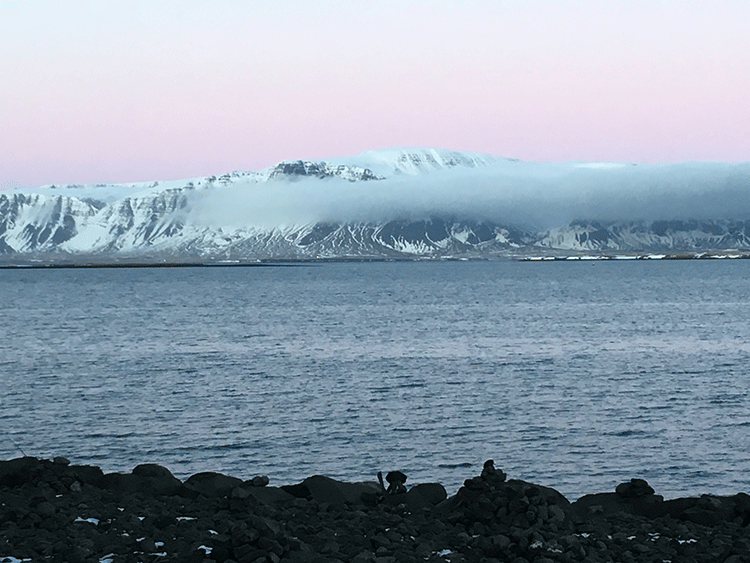Updates to current understanding on atmosphere-cryosphere interactions
Atmosphere and cryosphere are closely linked and therefore need to be investigated as an interdisciplinary subject. For example, atmospheric air pollutants, in particular black carbon (BC) and dust aerosols, are deposited on clean snow, land ice or sea ice surfaces, and decrease their albedo. Due to albedo-feedback, snow and ice are melting faster and seasonal snow cover earlier.
Writers of the article, Pavla Dagsson-Waldhauserova and Outi Meinander, briefly summarize and assess the current understanding on atmosphere-cryosphere interactions with the focus on transport, deposition and effects of black carbon, dust and other aerosols. They also point out that seemingly small amounts of black carbon in snow, of the order of 10–100 parts per billion by mass (ppb), have shown to decrease its albedo by 1–5 %.
The impacts of air pollutants on the cryosphere and the identification of light-absorbing impurities in snow pack are crucial to understand the interaction of atmosphere and cryosphere and climate. For example, the latest IPCC special report SROCC recognizes black carbon and dust as short-lived climate forcers and as light-absorbing aerosols connected to snow cover changes.
The main objective of the researchers was to fill some of the gaps in the understanding of high latitude dust sources, local sources of black carbon and other air pollutants at high latitudes, as well as long-range transport of air pollution from lower latitudes. The editorial includes a description of the progress reached by described collection of the published papers. These include studies on cryosphere and atmosphere, aerosol and gases, both for natural and anthropogenic air pollution sources, both for local air pollution and long-range transport of air pollution.

The deposition of Black Carbon and dust has cryospheric and climatic impacts. Photo: Outi Meinander (Reykjavik, Iceland).
Further information:
Outi Meinander, Senior research scientist, Finnish Meteorological Institute, outi.meinander@fmi.fi
Dagsson-Waldhauserova P. and Meinander O. Editorial: Atmosphere - cryosphere interaction in the Arctic, at high latitudes and mountains with focus on transport, deposition and effects of dust, black carbon, and other aerosols. Front. Earth Sci., doi: 10.3389/feart.2019.00337, accepted, 2019.
https://www.frontiersin.org/articles/10.3389/feart.2019.00337/full
The Frontiersin Research Topic contributes to the heritage of the Nordic Center of Excellence CRAICC
Both Dagsson-Waldhauserova and Meinander are former Fellows of the Nordic Center of Exellence NCoE CRAICC ("Cryosphere–Atmosphere Interactions in a Changing Arctic Climate") funded by NordForsk, 2011–2016. The heritage of CRAICC science continues in their collaborative research work and joint publications, as well as in promoting the topic in various editorial and convener activities.
Senior Research Scientist Outi Meinander works at the Finnish Meteorological Institute in the Climate Research Programme, Atmospheric Composition research unit's Atmospheric Aerosols group. She is also a current member of the FCoE ATM, Centre of Excellence in Atmospheric Science - From Molecular and Biological processes to The Global Climate. She is currently PI of two black carbon and high latitude dust projects, "H2020 EU-Interact-BLACK" and Ministry for Foreign Affairs of Finland MFA funded IBA-project of "Black carbon in the Arctic and significance compared to dust sources (IBA-FIN-BCDUST), and also a member of AKA NABCEA, Academy of Finland funded project of "Novel Assessment of Black Carbon in the Eurasian Arctic".